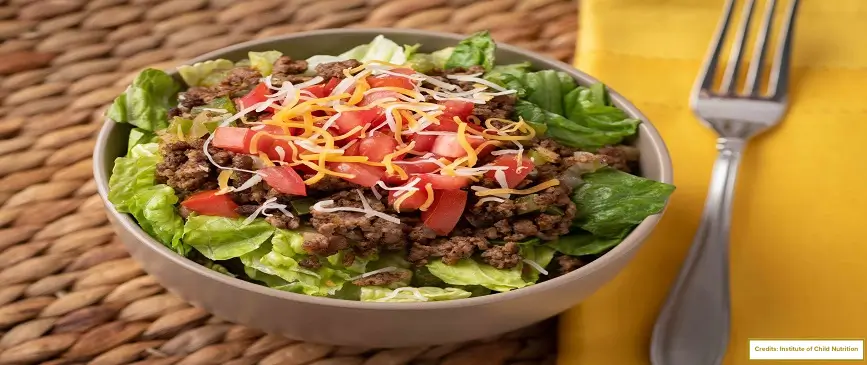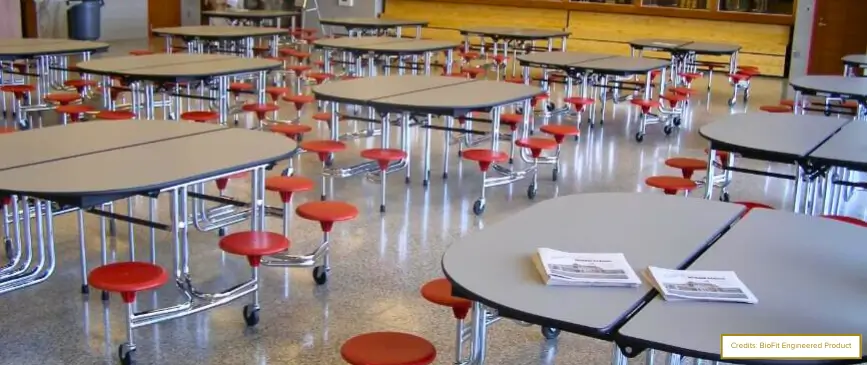Introduction
The high school cafeteria is a hub of activity, buzzing with energy and life. It holds more than just a title: CAFETERIA. It’s a hotspot for friendship, group project plotting, and, let’s be honest, last-minute homework panic. For many, it’s a second home. That’s why creating the perfect space is so important.
This guide will walk you through every step of the process, helping you design a high school cafeteria that truly meets the needs of today’s students while standing as the heartbeat of your school community.
How to Design a High School Cafeteria – 4 Steps Process
Phase 1: Understanding the High Cafeteria Schoolers Need
Let’s be honest! Setting up a high school cafeteria isn’t just about food. It’s about vibes. Unlike elementary school kids still figuring it all out, high schoolers have opinions, styles, and expectations. For them, the cafeteria is like their second home.
So, what makes a cafeteria a winner? That’s step one in designing a high school cafeteria → GETTING INSIDE THEIR HEADS!
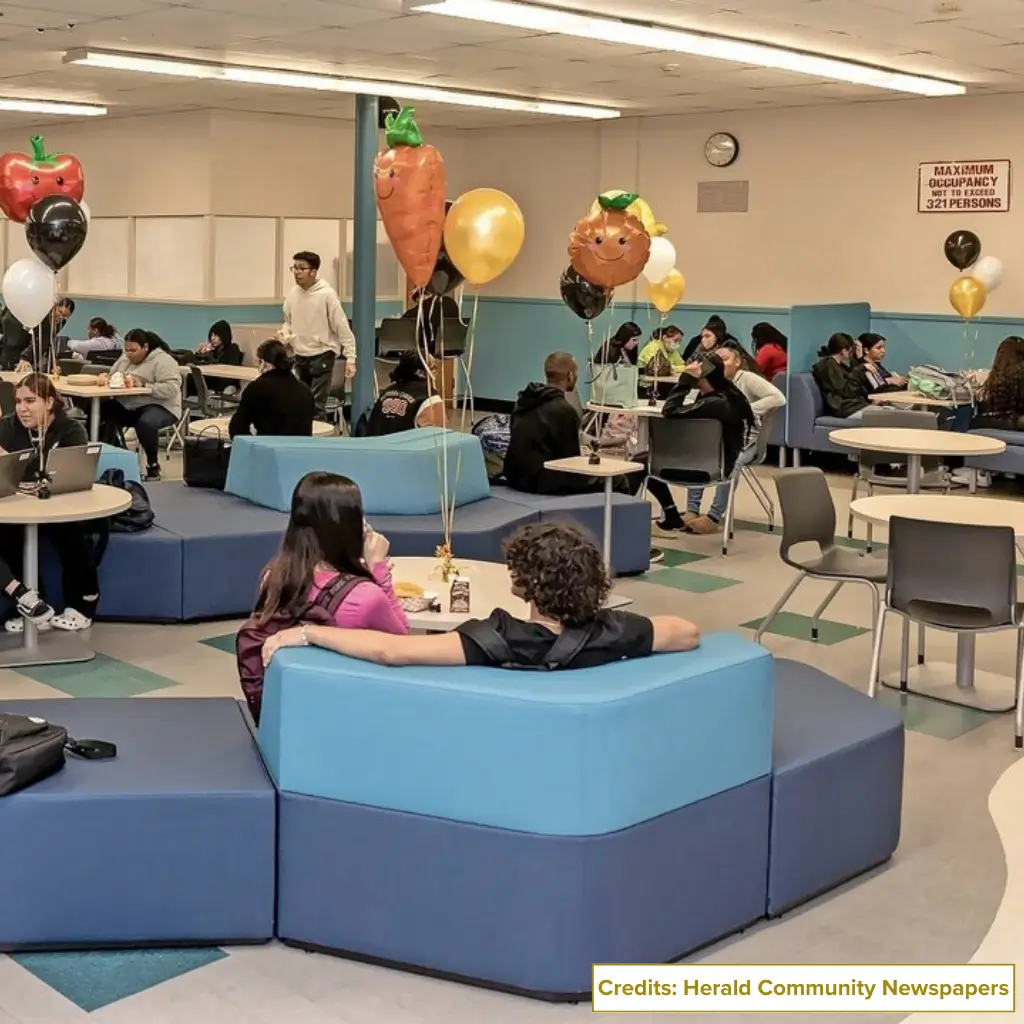
Here’s what we’ve learned after years of designing spaces that high schoolers want to be in:
- A cafeteria should feel more like a hangout and less like a hospital cafeteria. Nobody wants to eat in a space that screams “institutional.” Think vibrant designs that make students want to linger.
- Good food is non-negotiable. Healthy meals? Yes. Comfort food? Absolutely. Don’t forget to account for food allergens and diverse dietary needs.
- Flexibility is key. Some students want quiet corners to study or eat solo, while others need big, communal tables to sit with their whole squad. Your cafeteria should work for all types.
- Fast service is a must. Teens are busy, and no one wants to waste half of lunch waiting in line.
- Outlets and charging stations for the win. Phones, laptops, tablets, and a tech-friendly cafeteria are huge bonuses.
- Noise control matters. High energy is great, but nobody likes shouting over their lunch.
Yet, schools have to juggle policies like nutrition standards, safety, and budgets. But that doesn’t mean they can’t get creative. Maybe it’s rotating food stations to keep things fresh or student surveys to make the menu more exciting. Flexibility and minor adjustments can meet student needs without breaking the rules.
Phase 2: The High School Cafeteria Design Layout Process
→ Student Population and Usage Analysis
The first step in designing a high school cafeteria is crunching the numbers. How many students will use the cafeteria at any given time? Consider grade-specific recess timings, mobility requirements, and even potential school growth.
This data isn’t just a numbers game. It sets the foundation for your layout, letting you know how much space you will need, the seating capacity, and even how many lunch periods you might need to avoid overcrowding.
→ Capacity and Flow
A smooth experience hinges on how students move through the cafeteria. Assess your space and think about how to handle the lunchtime rush. Efficient entry and exit points, well-placed food stations, and staggered meal breaks can help prevent chaos and manage behavior.
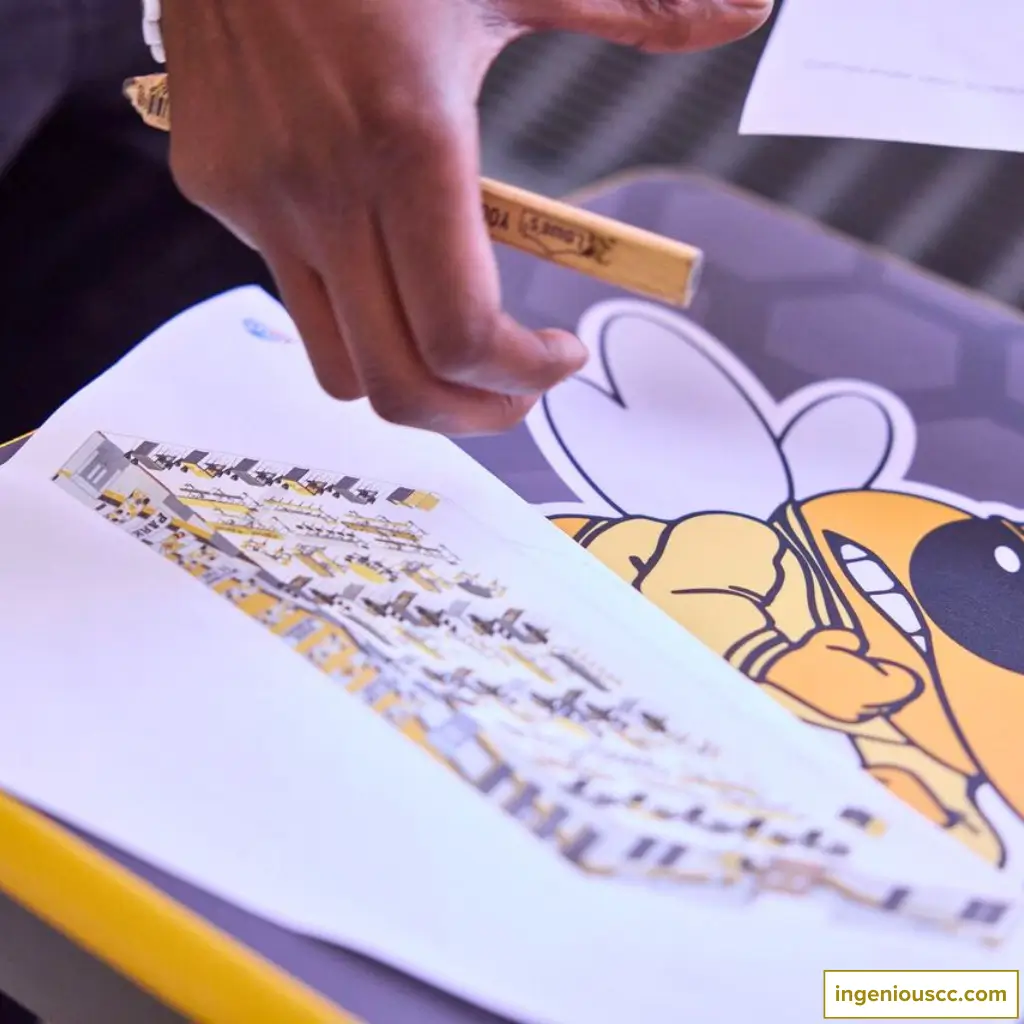
→ Space Calculation
The cafeteria often doubles as an event space for dances or assemblies, so plan accordingly. Keep 2.0 to 3.0 square meters per student and ensure walkways are wide enough for smooth movement. These foresight will aid in the decision-making of seating options and different types of tables for the school cafeteria.
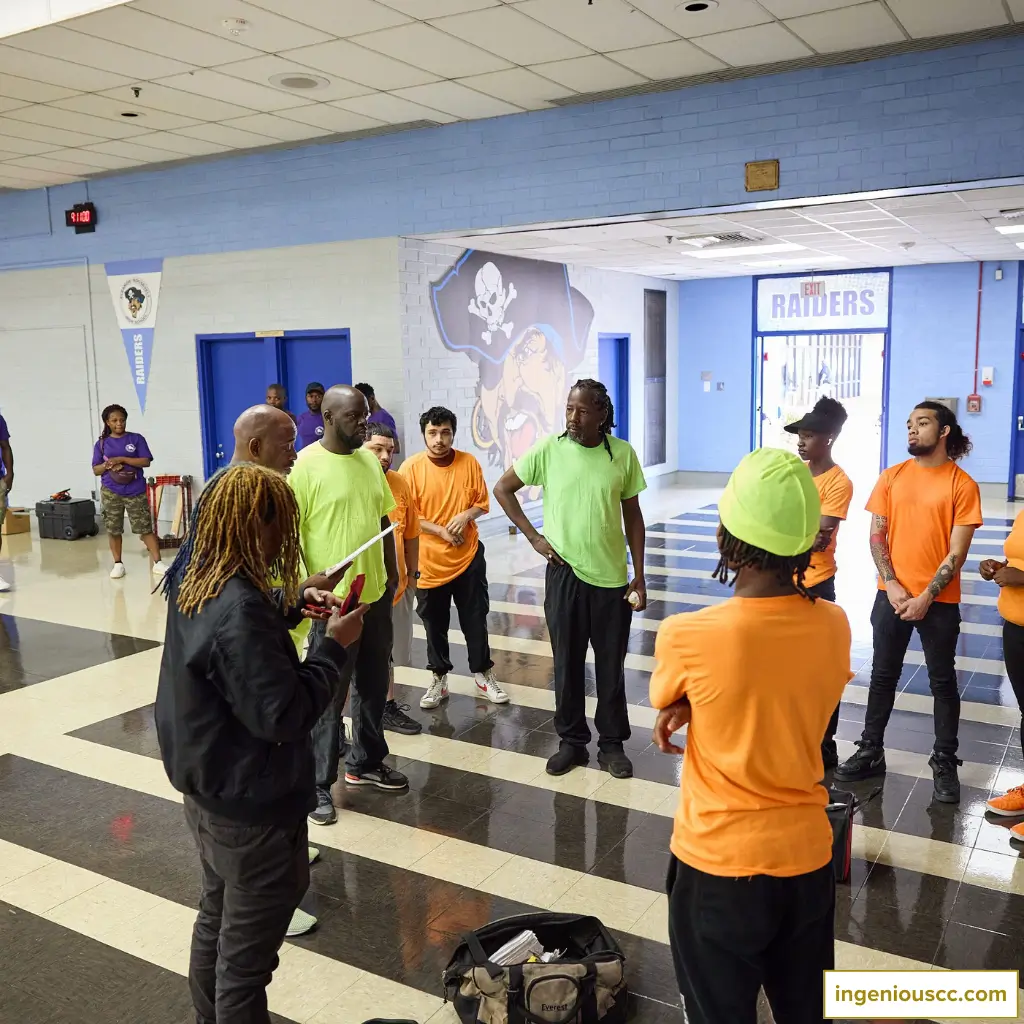
→ Zoning the Areas
Break the cafeteria into zones that make sense. Allocate a separate place for the kitchen, food stations, and handwashing areas. Likewise, if possible, include dedicated spaces for waste disposal and outdoor eating areas.
Zoning doesn’t just improve efficiency; it also contributes to a better experience for students and staff alike.
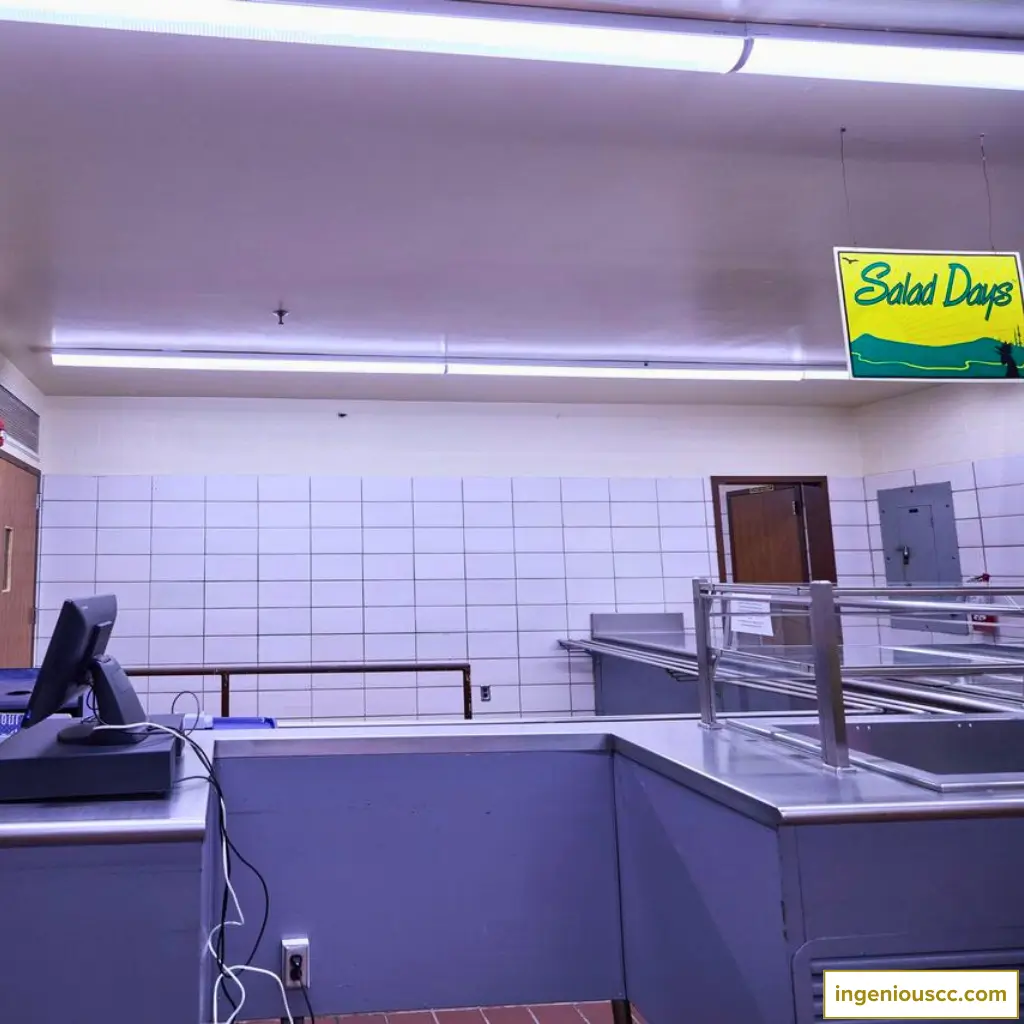
→ Kitchen Design
Behind every great meal is a well-organized kitchen. Map out distinct areas for cooking, prep, and washing. Prioritize energy-efficient appliances and ensure proper ventilation. Safety is key. Don’t skimp on essentials like fire extinguishers and first-aid kits. A well-planned kitchen isn’t just practical; it keeps school cafeteria workers operating smoothly even during the busiest lunch periods.
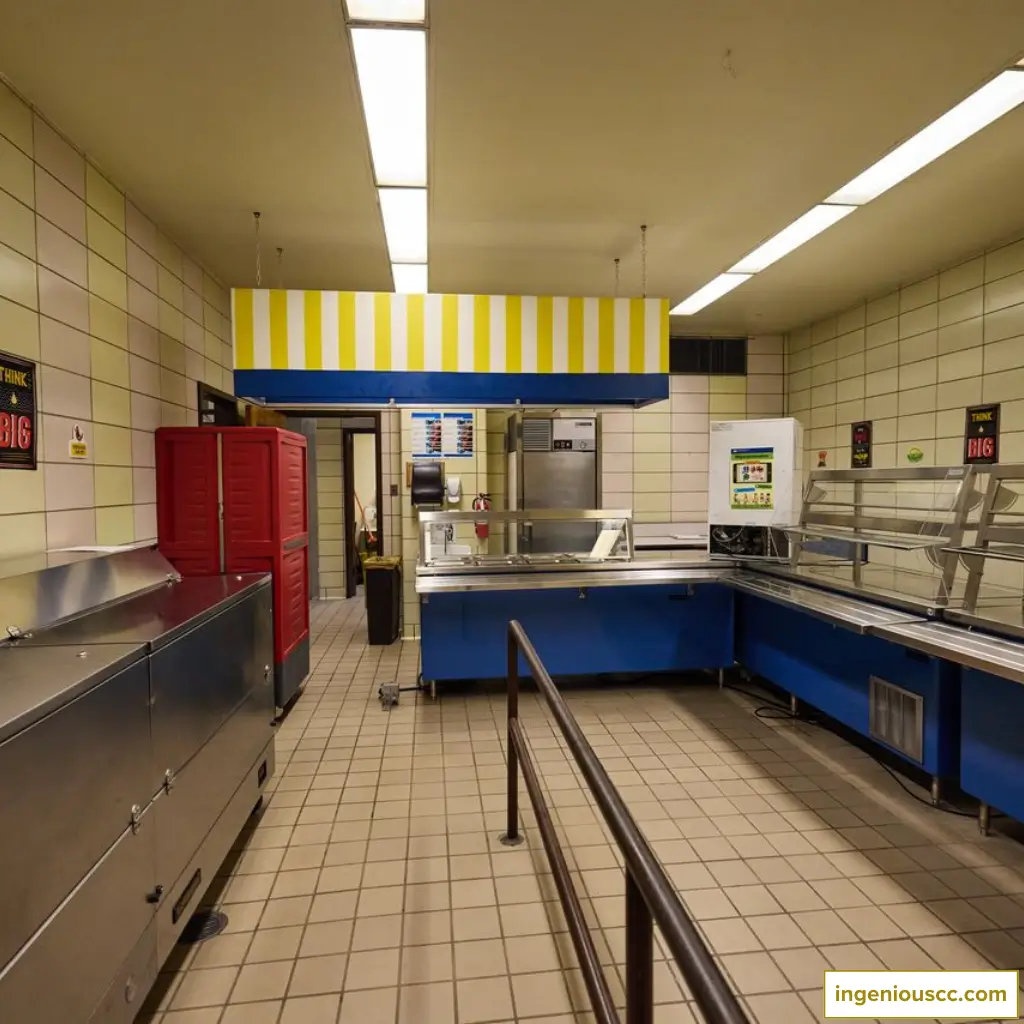
→ Seating and Tables Arrangement
When designing school cafeteria seating, think about functionality and comfort. Mix and match seating options to cater to different needs. Incorporate assigned seating where needed or flexible arrangements for group work and socializing.
For a balanced approach, use a mix of circular tables to encourage conversations and long tables for communal dining. Options like movable tables also allow flexibility for events or club meetings.
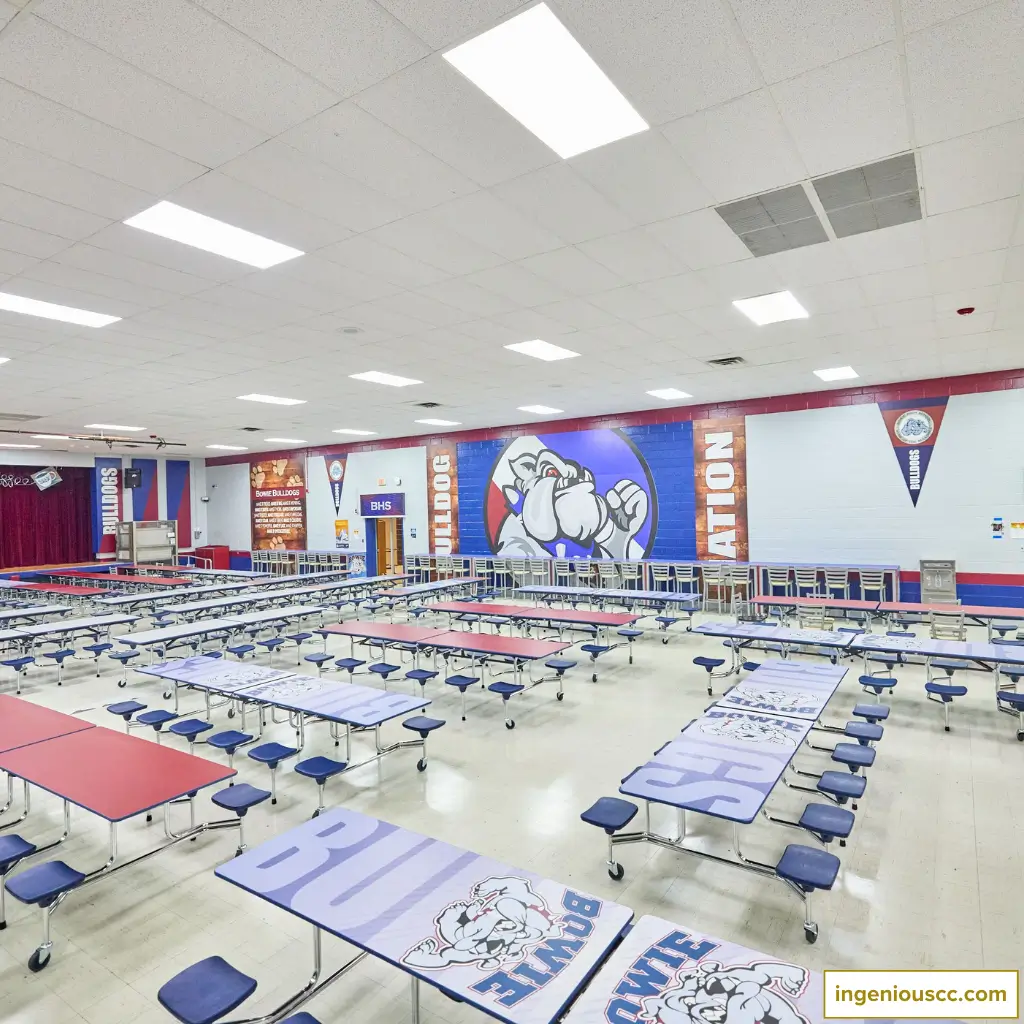
→ Aesthetic Appeal
Use school colors, murals, and logos to bring energy to the space. A welcoming atmosphere can do wonders for fostering a positive culture among students. Bright, cheerful designs are not just visually pleasing; they make the cafeteria a place student look forward to visiting.
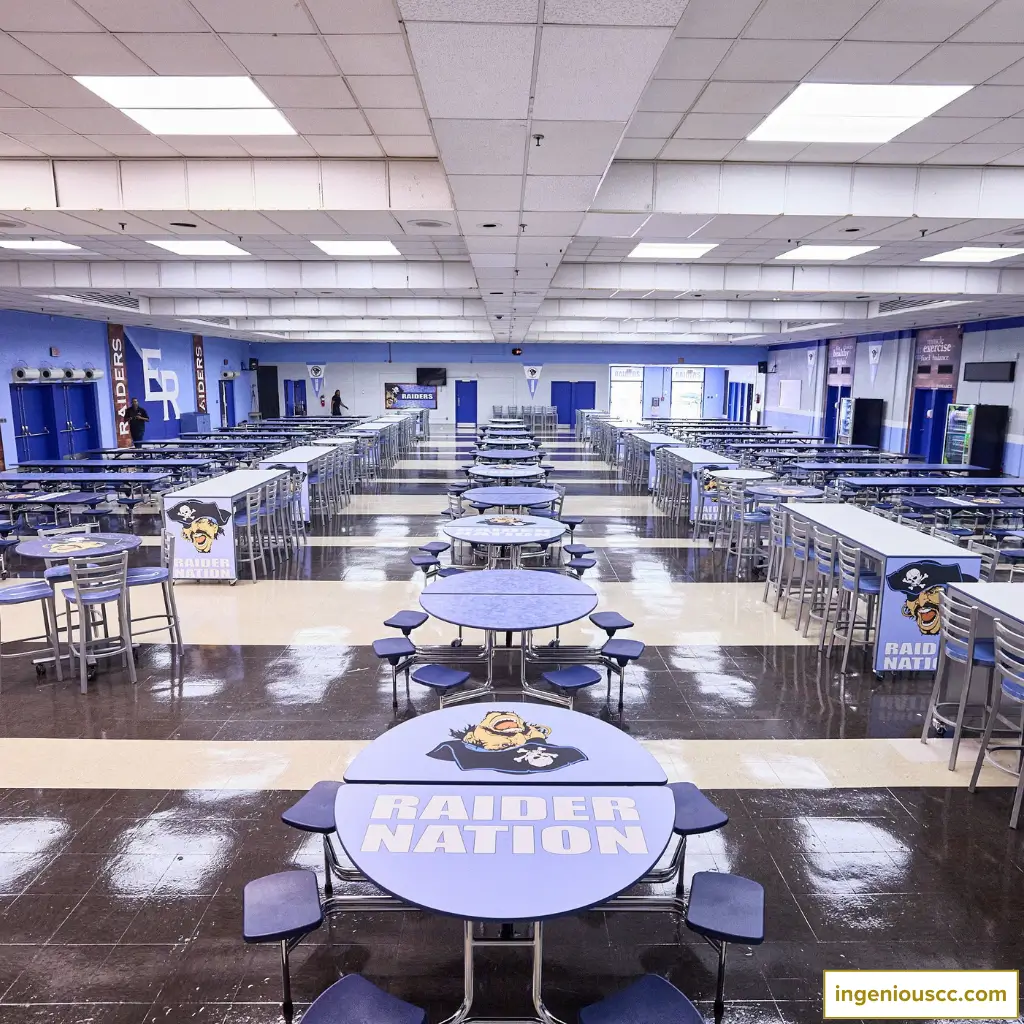
→ Furniture Selection
Choose durable yet versatile furniture. Modular furniture works well, which can be rearranged to meet daily needs. Don’t forget comfort. Students spend a good chunk of their time here. Flexible, movable pieces align with the demands of a modern school cafeteria.
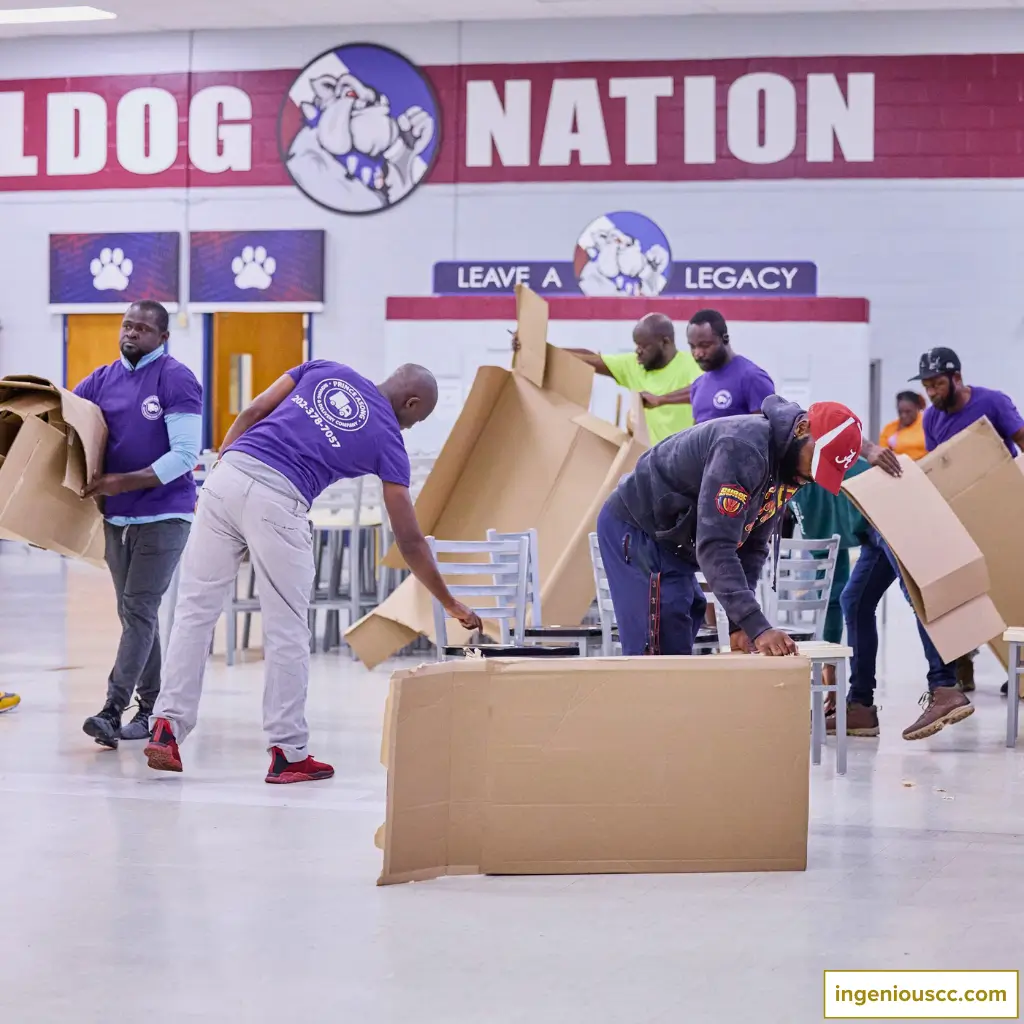
→ Lighting
Lighting has a huge impact on mood and functionality. Maximize natural light with large windows or skylights and supplement it with energy-efficient LEDs. Bright lighting contributes to a healthy school cafeteria environment while saving energy costs.
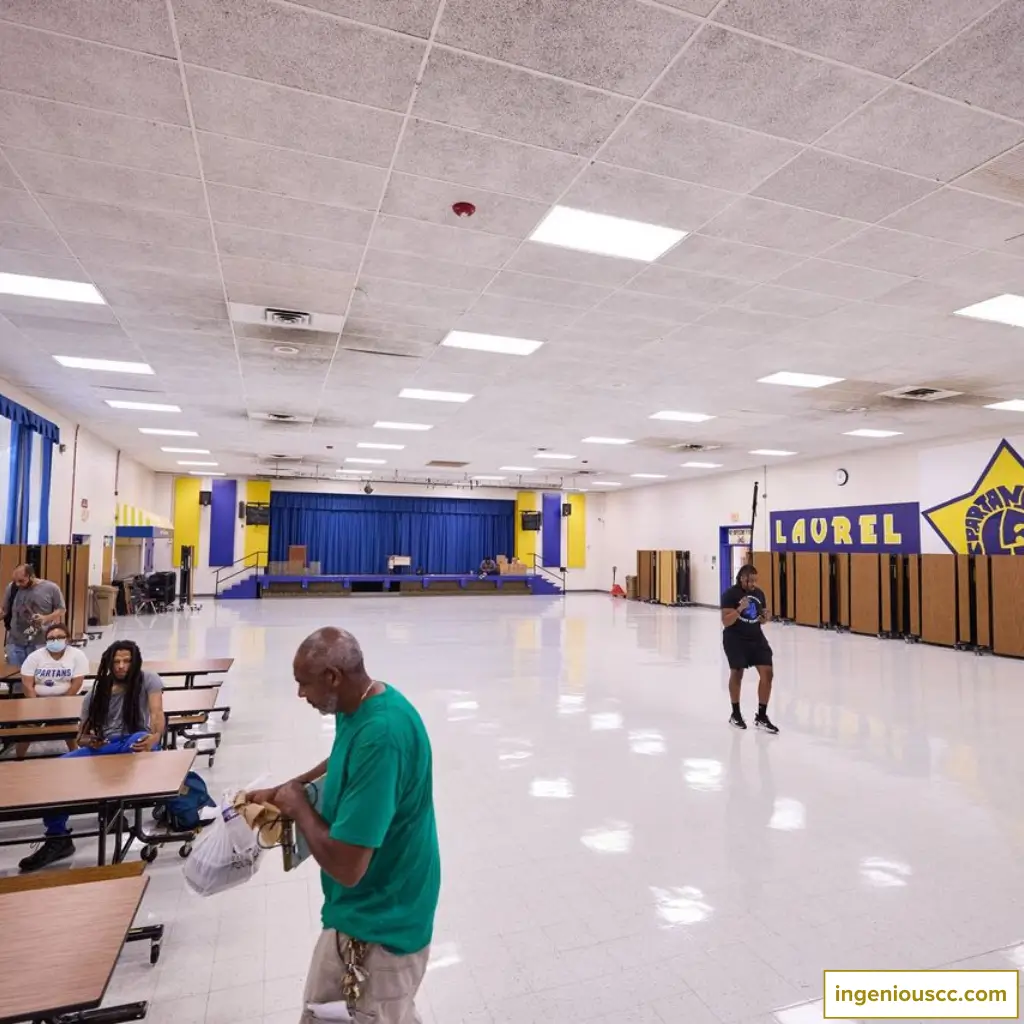
→ Entertainment and Technology Integration
Add fun things while designing a high school cafeteria. Incorporate entertainment options like digital trivia games, social media challenges, or even interactive screens. Include charging stations for devices and a tech-friendly setup to reflect today’s impact of school cafeteria spaces. Students will appreciate a cafeteria that offers both fun and convenience.
→ Health and Safety
Safety is non-negotiable. A cafeteria that prioritizes safety and health fosters trust among students and parents. Use slip-resistant flooring, install acoustic panels to control noise, and ensure easy and efficient waste disposal. With food allergens being a concern, clear labeling and designated areas for specific diets are crucial.
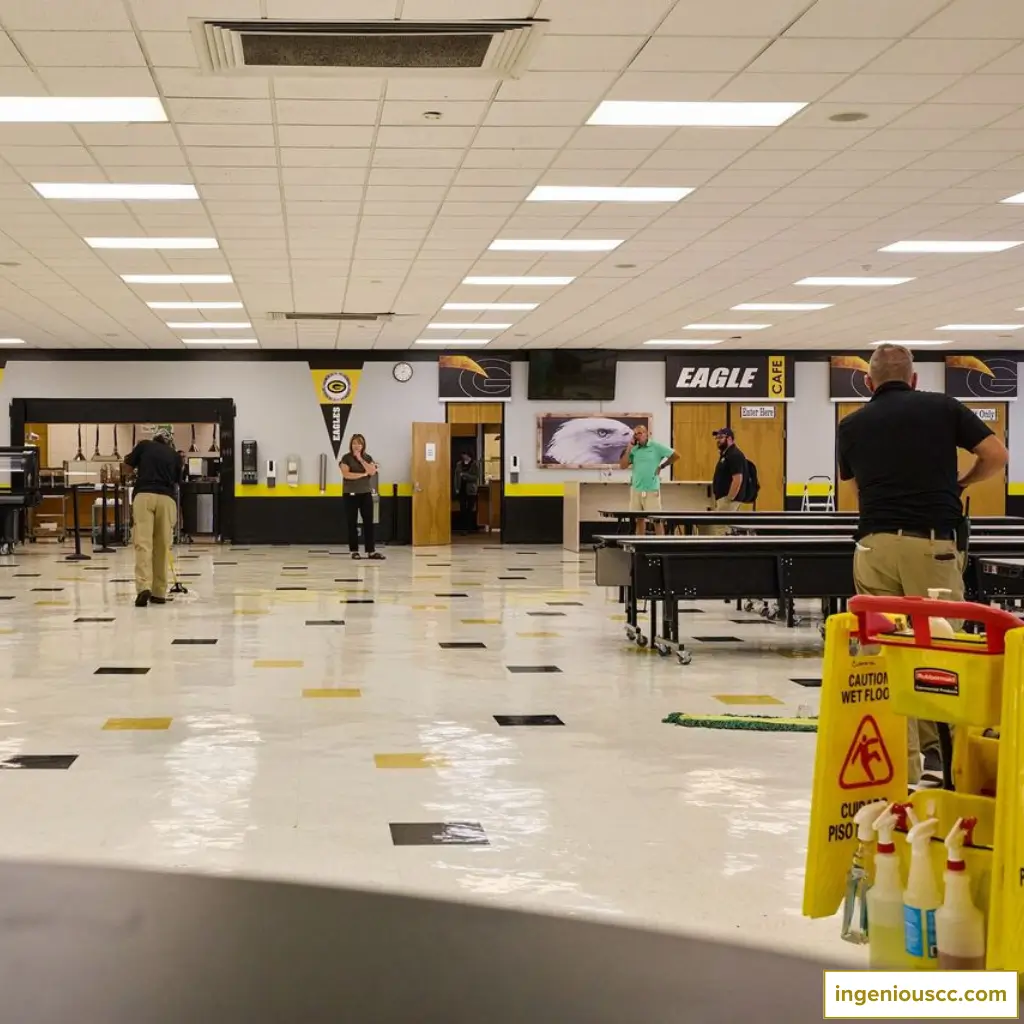
→ Appealing Lunch Menus
Nobody wants the same boring menu every day. A good menu can also encourage healthy eating habits among students. Rotate options to keep things fresh and exciting. Include choices for vegetarian, vegan, and gluten-free diets.
To spice things up occasionally bring fast food in school cafeteria by partnering with local food chains. However, make sure to keep up the balance with healthier options.
Suggested Reading → Breakfast Ideas for School Cafeteria.
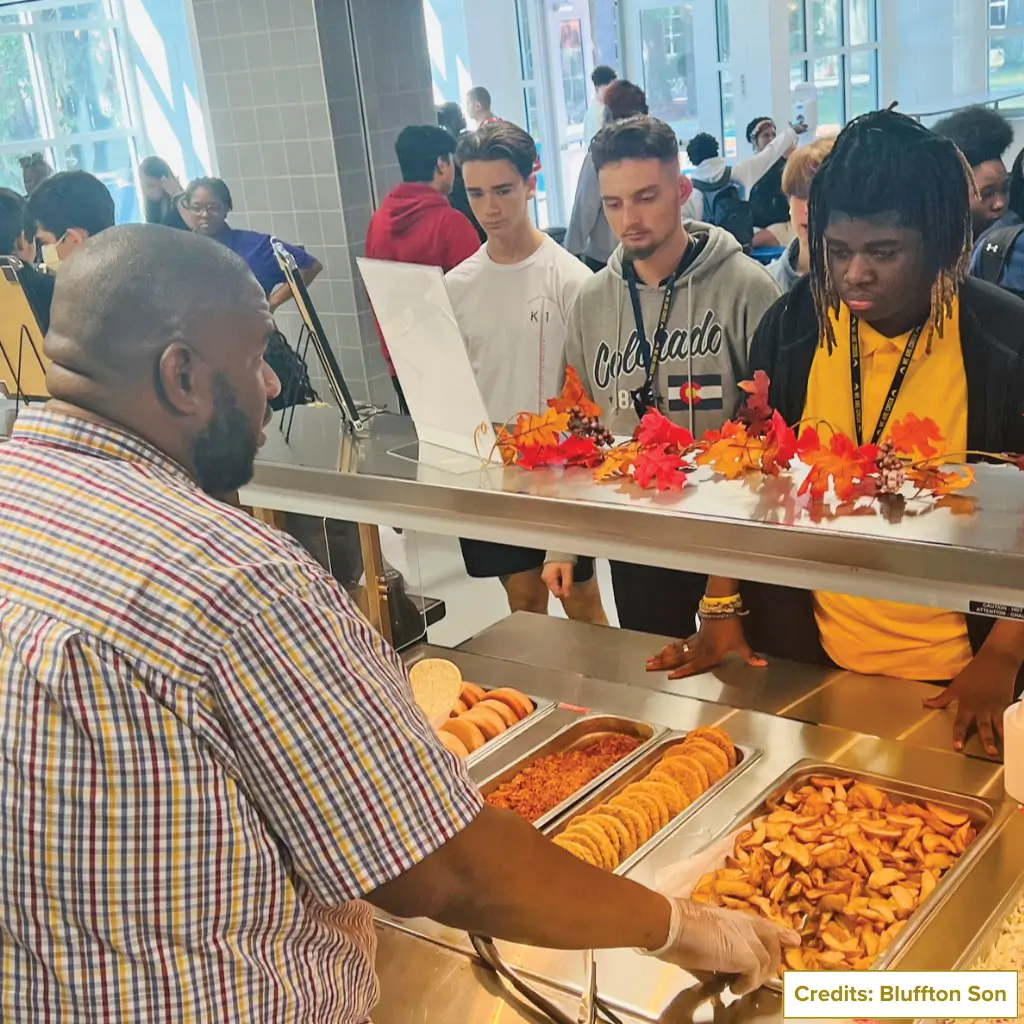
→ Sustainability
Sustainability is more important than ever. Use energy-efficient appliances and eco-friendly materials. Introduce separate bins for composting, recycling, and trash to reduce food waste. Not only does this help the environment, but it also sets an example for students.
→ Inclusivity
One key step in designing a high school cafeteria is making sure it is accessible for all students. Wide pathways, ramps, adjustable tables, and clear signage make the space user-friendly. Quiet zones offer a welcome break for students who may feel overwhelmed.
→ Budget and Funding
No design project is complete without a budget. Factor in costs for construction, furniture, and maintenance. Explore grants or local sponsorships to fund extras like advanced tech or energy-efficient upgrades. Consulting with cafeteria redesign experts can help you stay within budget while achieving your vision.
Phase 3: Decorating the High School Cafeteria
The third phase is decorating the school cafeteria. It is actually the step that highlights all your efforts while designing. However, this doesn’t have to be expensive. Small, creative changes can make a big difference.
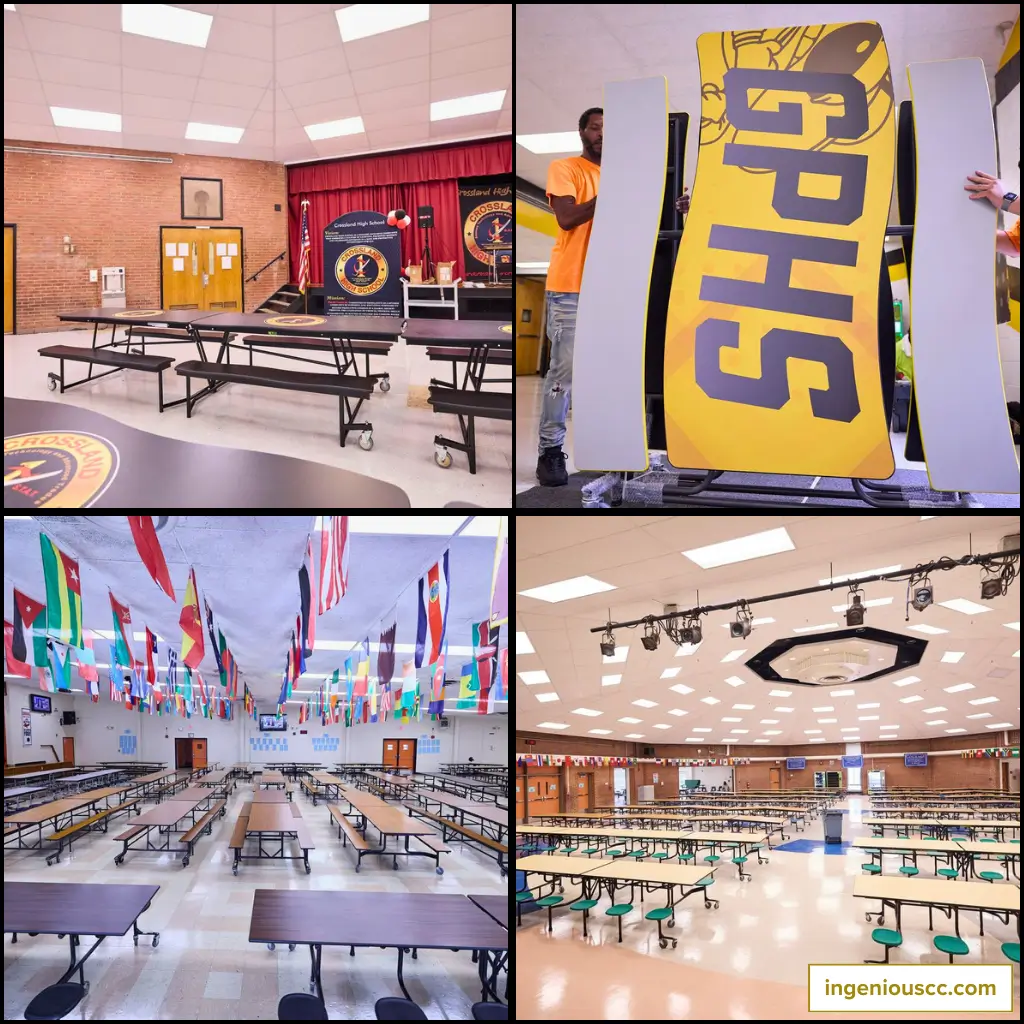
You can:
- Use creative wall art ideas to fill blank spaces and spark inspiration.
- Setup cafeteria bulletin boards featuring student achievements, upcoming events, or motivational messages.
- Adorn the walls with inspiring quotes that motivate students and staff alike.
- Celebrate the year’s highlights with Christmas, Thanksgiving, and Halloween cafeteria decorations.
- Use wall space to hang flyers and banners announcing sports events, club activities, or special lunch menus.
Phase 4: Post-Implementation Feedback and Updates
Finally, once the cafeteria is functional, gather feedback. Take a student survey to understand what’s working and where improvements can be made. Update decor and facilities regularly to keep the space fresh and engaging and reexamine the setup every six months to ensure the cafeteria evolves with the students’ needs.
Let’s Talk! We Love Designing School Cafeterias…
In a nutshell, designing a high school great cafeteria doesn’t have to be complicated. With the right plan and support, you can create a space that’s comfortable, useful, and perfect for your school’s needs
At Ingenious Culinary Concepts, we’re here to collaborate with you on creating a space that’s as beautiful as it is practical. Whether you’re looking for fresh ideas or full-scale design assistance, our team is ready to help. Contact us or fill out our online form today, and together we’ll build a cafeteria that inspires and serves.
FAQs
What key considerations should be considered when designing a high school cafeteria?
Schools typically consider factors such as student flow, seating flexibility, food service efficiency, safety, and accessibility when planning the cafeteria layout.
What is the ideal seating capacity for a high school cafeteria?
The seating capacity should be in line with the school’s enrollment, typically accommodating 25-50% of students per lunch period.
How can we make the cafeteria look modern and fresh?
Use trendy designs, bright colors, and contemporary furniture to give the space a youthful vibe.

